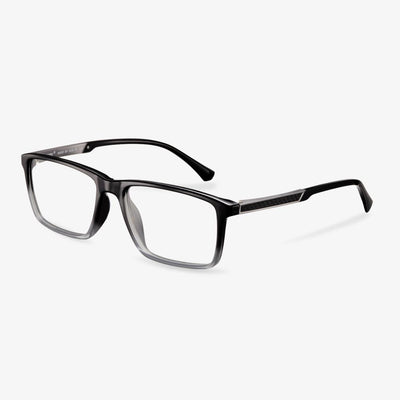What Are Progressive Lenses?
Your eyes change with your age. When your reach your 40s, you may find that it is difficult for you to focus between a book, a website on a computer screen and the conference room whiteboard. Progressive lenses are growing in popularity among people who need help seeing near, far and in-between.
Progressive lenses have grown in popularity and are one of the most common solutions to treat vision loss that occurs with age or presbyopia. Progressive lenses have a seamless increase in magnification from the top to the bottom of the lens, helping you see clearly at all distances with just one pair of glasses. The top portion of the lens enables you to see the far-away objects, the middle portion of the lens enables you to focus on the intermediate objects and the bottom to see objects close-up. The prescription changes little by little across the lens surface providing a gentle transition.
After knowing what the progressive lenses are, do you know what are the pros and cons of progressive lenses? If not, keep on your reading and we will show you some information.
Are titanium glasses frames worth it?
The maintenance cost of prescription titanium glasses is low. Apart from the durable feature, they hold their shape. It doesn't break on the ground. Even if the lens breaks, the frame will not break. You just need to replace the lens, do not have to pay for a new one. In other words, you don't have to spend a lot of time taking care of them, and you can make sure they last for years. It doesn't make your allergies worse and lasts for years. If you've ever broken a glass frame, titanium might be the perfect material for you.
What is cellulose acetate?
Cellulose acetate refers to a thermoplastic resin obtained by esterification with acetic acid as a solvent and acetic anhydride as an acetylating agent under the action of a catalyst. It is the first commercially produced and continuously developed fiber among cellulose derivatives. Vegetarian organic acid esters.
Seek professional help.
Many plates, TR glasses have fixed nose pads that cannot be changed. But the metal material of the nose pad can be changed. An optometrist who is a professional optometrist may not be a good adjuster. There is no conflict between the two. The skills about that shall be developed in a lot of practice. For a seemingly easy operation, its strength is invisible real skills.
What is blue light?
Our daily lives are inseparable from mobile phones, computers, tablet computers, and other electronic products. Many people's eyesight is also going downhill due to long-term exposure to strong light electronic screens, and their eyes are more or less potentially adversely affected. It is found that many optical stores sell blue light filter glasses, which have the function of blocking 99.9% UV and scattered blue light, alleviating visual fatigue. They claim that these glasses can block short-wave blue light emitted by electronic products such as mobile phones and computers, and even prevent age-related macular degeneration so they are much sought after by consumers. The price of these so-called anti-blue-light glasses varies greatly, ranging from dozens of dollars to several thousand dollars. Do these blue light blocking glasses really have so many magical functions?
The natural light seen by the human eye is composed of a spectrum of different colors, including red light, orange light, yellow light, green light, blue light, indigo light, purple light, which gives people a visual feeling of white. Different wavelengths present different colors visually, and the shorter the wavelength, the higher the energy. At present, products with electronic screens such as computers and mobile phones use LEDs and other materials to emit light mainly in three colors of red, green, and blue, and blue light accounts for the main part. Blue light belongs to the range of visible light, belongs to short waves. And the wavelength is between 400 nanometers and 500 nanometers, which is close to ultraviolet and carries a large amount of energy. And this part from 400 nanometers to 450 nanometers is called high-energy short-wave blue light.
Find the right size
The right glasses should sit comfortably on the bridge of the nose, not pressed against the forehead or cheeks. But they don't stay at the tip of the nose for so long that they slip while squinting or wrinkling your nose. The fit of the nose determines the distance between the glasses and the face. A proper fit should allow the lens to be between 14 and 24 millimeters away from the eyes. When you want to find glasses that fit, don't clip, don't slip, and don't lead to discomfort, you have to find out the size you need.
What Are Bifocal Glasses?
Bifocal lenses are divided into two parts to accommodate two different prescriptions in one lens. One area of the lens will have one prescription (usually distance) and a segment in the lower half will have the other (usually near vision).
Bifocal glasses are most used to correct presbyopia - an age-related eye condition where the eyes begin to struggle to focus on anything up close. This difficulty usually results in people requiring glasses with two different prescriptions, one for short and one for long-distance.
On bifocal glasses, there is a distinct line between the different prescriptions. Wearers have to look up and down to switch between the prescriptions they need, with long-distance prescriptions at the top and near vision at the bottom.


















































